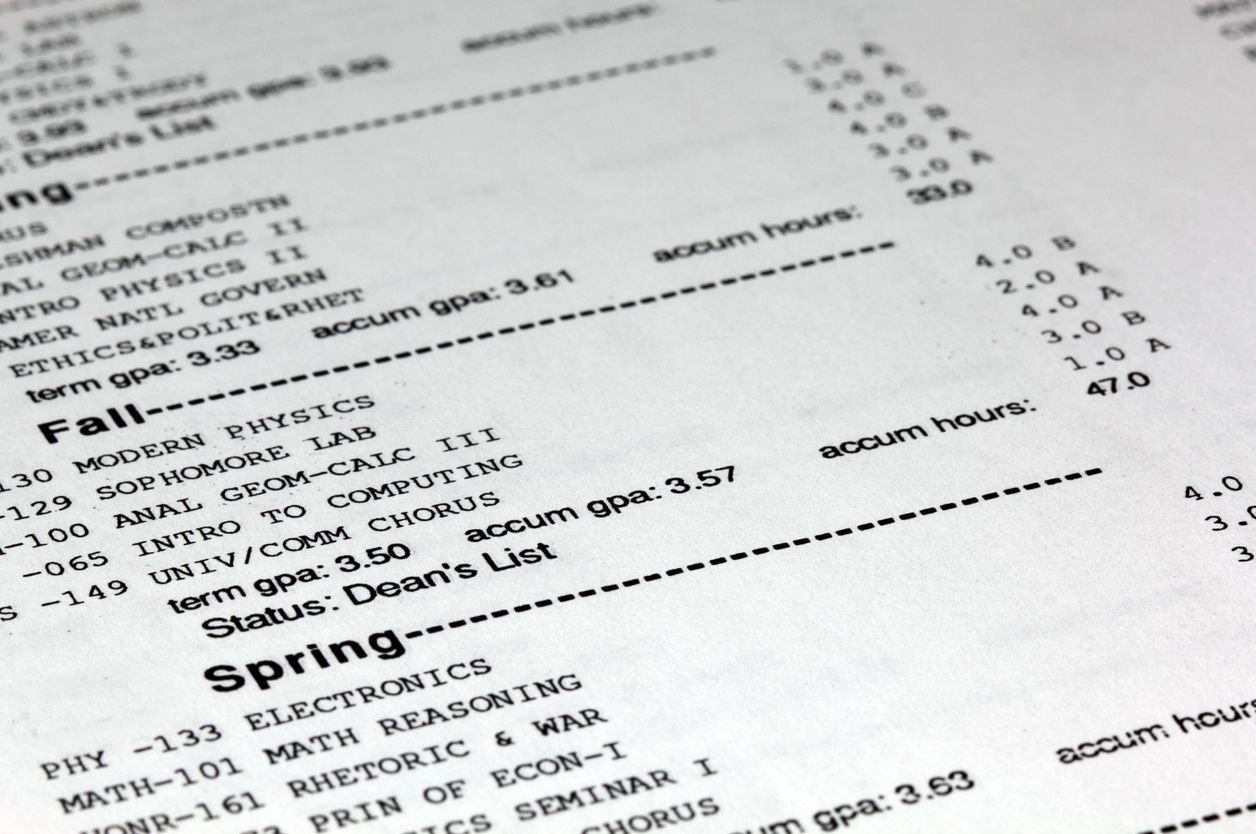This page is licensed under Creative Commons under Attribution 4.0 International. Anyone can share content from this page, with attribution and link to College MatchPoint requested.
The Truth About GPA: How Admissions Officers Recalculate Your Grades
As final transcripts arrive this summer, many students are celebrating GPA milestones and strong report cards. That hard work matters. GPA reflects effort, growth, and academic consistency. But here’s what most families don’t realize. The GPA printed on a transcript is not always the same GPA colleges use in admissions.
In fact, most colleges use their own internal formulas to recalculate GPA. And those formulas vary widely.

This recalculation process is one of the most misunderstood parts of college admissions. Here’s what you need to know about how it works and what really matters.
Your GPA Depends on Who’s Calculating
Most high schools assign GPA based on their own grading scale. Some use letters, others use percentages. Some weight honors or AP classes, others do not. Some include electives and PE, while others focus only on academic subjects.
That number on your transcript reflects your performance in the context of your school. But colleges read applications from thousands of schools, each with different systems. To compare students fairly, many colleges create their own GPA formula. This allows them to answer a more useful question: How has this student performed in their academic core?
What Gets Counted
Colleges typically focus on five core subjects:
- English
- Math
- Science
- Social studies
- Foreign language
Some schools include freshman grades, while others look only at 10th and 11th. Some recalculate GPA using a 4.0 scale and remove any extra weight from honors or AP classes. Others apply their own version of weighting based on course rigor. Many colleges do not count electives or non-academic courses like PE or health.
So depending on the approach, a student’s GPA might go up, go down, or stay about the same.
What Happens at Scale
In some cases, students with a GPA over 5.0 on their transcript might see that number recalculated to a 3.9. Other students with a 4.2 may end up with a 3.0 in the eyes of a particular admissions office. Still others may benefit from a recalculation that focuses on their strongest academic years or removes electives that brought down their average.
This is why comparing GPA across students, schools, or social media does not give an accurate picture. The number is only part of the story, and it changes depending on the context.
What Admissions Officers Are Really Asking
When admissions teams recalculate GPA, they are trying to understand two things.
First, did the student take advantage of the academic opportunities available at their school?
Second, is the student prepared for the level of rigor they will experience in college?
To answer these questions, they look beyond the numbers. They evaluate the types of courses taken, the level of challenge, and whether the student’s academic performance shows growth over time. They also use the school profile, a document that explains how the high school works, how many advanced courses are offered, and what the grading policies look like.
A Real World Example
Let’s say a student finishes junior year with a weighted GPA of 4.40 and an unweighted GPA of 3.65. Their transcript includes advanced courses in math, science, and English, along with electives in studio art and psychology.
One college might look only at unweighted grades in core subjects from 10th and 11th grade. That could bring the recalculated GPA down to 3.42. Another college might include 9th through 11th grade and apply slight weighting for honors and AP classes, resulting in a GPA closer to 3.83. Yet another might review all classes, weighted, over all three years, landing close to the original 4.40.
Each of these GPAs is valid, depending on the lens the college is using.
What You Can Control
Since you cannot control how a college will recalculate your GPA, focus on the parts of your academic journey that are in your hands:
- Choose courses that challenge you
- Prioritize strong performance in core subjects
- Aim for improvement each year
- Take electives that reflect your interests and future goals
- Read your school’s profile and understand how your transcript will be viewed


